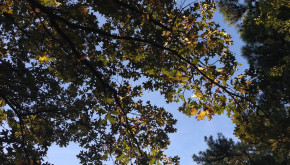
Guest writer: Becky McPeake, Extension Wildlife, UA Division of Agriculture.
Do your woods look like a plow has run through it? Are you having problems with something damaging your tree seedlings, and it’s not deer? Are there mud holes along your waterways? These are indications you’ve got feral hogs.
Feral hogs, also called wild pigs, feral swine, or wild boars, are a pest in many southern states and the west coast. The National Feral Swine Mapping System http://128.192.20.53/nfsms/ shows their steady progress northward and westward. Because some feral hog populations appear seemingly out of nowhere, it’s widely believed the rapid expansion of feral hogs into new territory is because hog hunters are releasing them for sport. But oh, the problems they cause!
Farmers, homeowners, and yes, even hunters have issues with these non-native swine. Feral hogs are attributed to crop, pasture and lawn damage, water pollution and sedimentation, disease transmission to livestock, pets, and people, and competition with native wildlife for limited food resources, as well as preying on some wildlife species. Their high reproductive rate plus low mortality equals population explosion, a so-called “pig bomb” by feral swine experts.
Once feral hogs are on your property, population control should begin immediately. Most experts recommend corral trapping the entire sounder (group of female hogs and their young) used in combination with shooting, snaring, or, some even suggest, dog hunting to remove the stragglers. (Because hog dog hunters tend to be the ones who release feral hogs, this can be a tricky proposition.) Use baits and game cameras to determine where and when to set the trap. Set the trigger only after the entire sounder is comfortable entering the trap. Feral hogs are quick learners and become educated if they escape any of these methods, so removing hogs “the right way” is very important. Contact your state’s hunters-feeding-the-hungry program to determine whether they accept feral hog meat. Of course, check state and local laws to make sure you are in compliance before removing feral hogs.
For information about feral hog sign, biology and life history, problems they cause, and how to get rid of them, there are a number of terrific websites to choose from, some of which are:
eXtension.org http://www.extension.org/feral_hogs,
Mississippi State University www.wildpiginfo.msstate.edu, and
Texas AgriLife www.feralhogs.tamu.edu.
Check out the Feral Hog CoP Facebook page. Contact your local county Extension service or state wildlife agency for further information.

